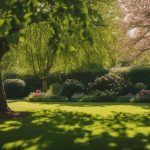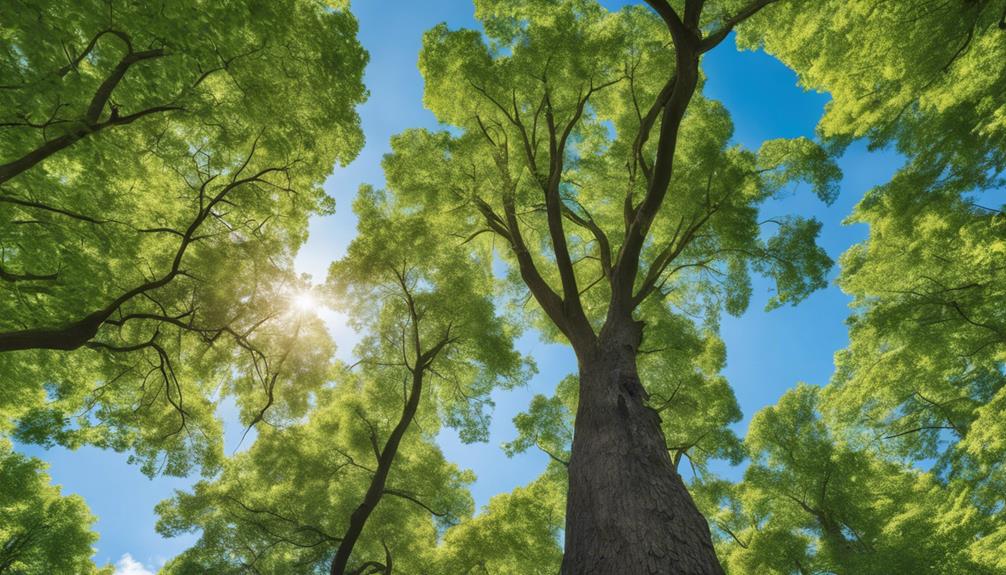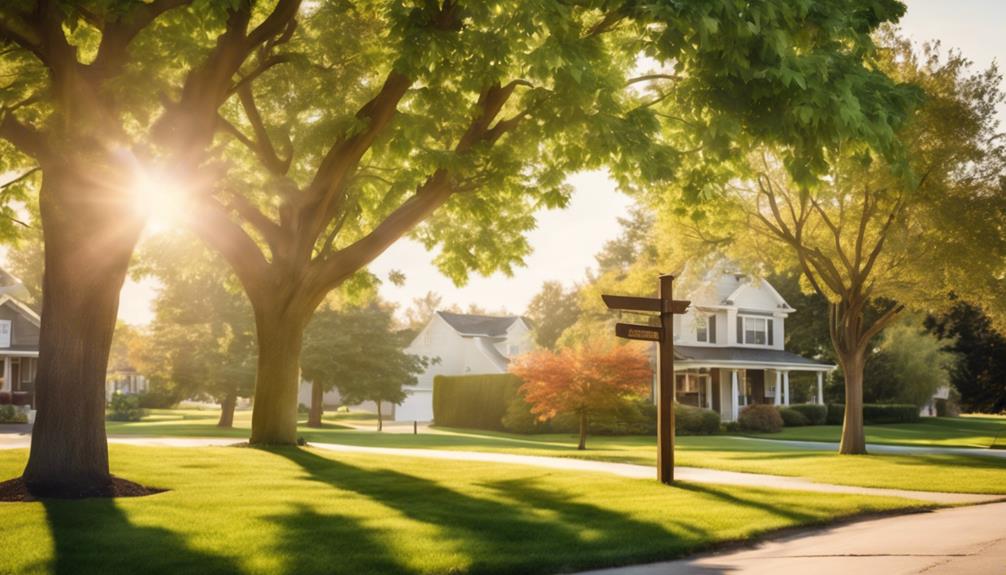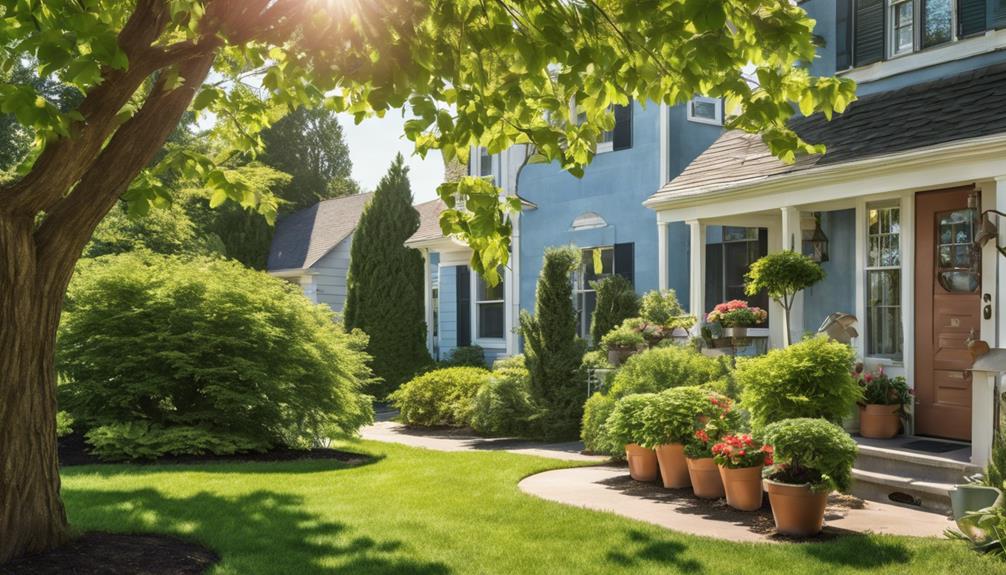
Why Choose Low-Maintenance Fencing for Gardens?
9 January 2025
Tree Pruning Edgbaston
9 January 2025Arborist services for tree safety encompass comprehensive assessments focusing on tree health, structural integrity, and environmental factors.
Certified arborists carry out regular inspections to detect diseases and identify potential hazards, thereby enhancing the tree's resilience.
Techniques such as pruning, cabling, and bracing are utilised to support weak structures and mitigate risks, particularly before storm events.
These practices not only ensure the safety of trees but also enhance property value and aesthetic appeal.
Understanding the importance of proactive management can significantly contribute to the longevity and health of trees.
Further insights on this topic are available for those interested in in-depth approaches to tree care.
Tree Health Assessment Importance
Tree health assessments are essential for identifying early signs of disease, allowing for timely intervention and treatment.
Furthermore, evaluating the structural integrity of trees ensures their safety and longevity, mitigating potential hazards.
Early Disease Detection
Regular health assessments are vital for maintaining the vitality of trees and preventing the spread of diseases. Through routine inspections, arborists can identify early signs of distress, such as discolouration, wilting, or unusual growth patterns, which may indicate underlying health issues.
Prompt detection of diseases allows for timely intervention, mitigating the risk of extensive damage to the tree and surrounding ecosystem. Additionally, these assessments facilitate the application of targeted treatments, enhancing the tree's resilience against pathogens and environmental stressors.
Structural Integrity Evaluation
Ensuring the structural integrity of trees is imperative for both safety and health within any landscape. A thorough evaluation involves assessing factors such as trunk stability, branch architecture, and root strength, all of which contribute to a tree's overall resilience.
Arborists utilise advanced diagnostic techniques, including visual assessments and non-invasive tools, to identify weaknesses that could pose hazards. By conducting regular structural integrity evaluations, potential risks can be mitigated, preventing catastrophic failures that could endanger people and property.
Furthermore, understanding a tree's structural health informs appropriate management practices, promoting longevity and vitality. Ultimately, prioritising structural integrity is fundamental for fostering safe, sustainable, and thriving arboreal environments.
Tree Species and Condition
Understanding the species and condition of a tree is essential for evaluating its safety and longevity.
Factors such as tree maturity, growth stage, soil quality, and susceptibility to pests and diseases play a significant role in determining overall health and stability.
A thorough evaluation of these elements enables arborists to make informed recommendations for maintenance and care.
Tree Age and Growth Stage
The energy of a tree is intricately linked to its lifespan and growth phase, which are influenced by both species characteristics and general condition. Understanding these factors is essential for effective arboricultural services aimed at enhancing tree safety.
Key considerations include:
- Species Longevity: Different species have varying life expectancies, impacting maintenance strategies.
- Growth Rate: Fast-growing trees may require more frequent inspections for stability.
- Maturity Indicators: Identifying growth rings helps determine maturity and potential vulnerabilities.
- Health Status: Trees exhibiting signs of disease or decay require immediate attention to mitigate risks.
Soil Quality and Composition
Soil quality and composition play a vital role in the health and stability of trees, as both factors directly influence nutrient availability and root development. A thorough understanding of the soil environment is critical for arborists to ensure optimal growth conditions for various tree species.
Key aspects to take into account include:
- Soil Texture: Determines water retention and aeration levels.
- pH Levels: Affects nutrient availability and microbial activity.
- Organic Matter: Enhances soil fertility and promotes healthy root systems.
- Drainage Capacity: Influences the risk of root rot and overall tree stability.
Assessing these components allows arborists to prescribe necessary interventions, whether through soil amendments or targeted planting techniques, ensuring trees thrive in their environment and maintain structural integrity.
Pest and Disease Resistance
Healthy soil significantly contributes to a tree's resilience against pests and diseases. A well-nourished tree is better equipped to withstand environmental stressors and biological threats.
Understanding the interplay between tree species and their specific conditions is crucial for enhancing resistance. Key factors influencing this relationship include:
- Genetic Resistance: Certain species inherently possess traits that deter pests.
- Nutrient Availability: Sufficient nutrients strengthen a tree's immune system.
- Water Management: Proper irrigation minimises stress and promotes vitality.
- Soil Microbiology: Beneficial microbes can outcompete harmful pathogens.
Initial Site Evaluation Steps
The initial site evaluation is critical for assessing tree safety and health.
It involves a thorough inspection of the tree's condition, which informs the selection of appropriate pruning techniques to enhance vitality.
Furthermore, understanding specialised climbing techniques is fundamental for safely conducting these evaluations and subsequent maintenance tasks.
Initial Tree Inspection Process
Conducting an initial tree inspection is crucial for ensuring the safety and longevity of both the trees and the surrounding environment. This process involves a systematic evaluation to identify potential hazards and assess tree health.
Key steps include:
- Visual Evaluation: Inspecting tree structure, bark integrity, and foliage condition.
- Root Examination: Evaluating visible roots for decay or soil erosion issues.
- Proximity Analysis: Assessing trees in relation to structures and utility lines.
- Environmental Context: Considering factors such as soil type, moisture levels, and local weather patterns.
Pruning Techniques for Tree Health
Effective pruning techniques are essential for maintaining tree health and promoting robust growth. Properly executed pruning improves sunlight penetration, facilitates air circulation, and encourages healthier foliage.
Arborists must adhere to specific strategies to optimise tree vigour:
- Remove dead or diseased branches to minimise the risk of decay.
- Thin crowded branches to promote light exposure and airflow.
- Maintain proper branch structure to ensure stability and strength.
- Prune at the right time according to species-specific growth patterns.
Specialized Climbing Techniques
Before commencing specialised climbing techniques, an initial site evaluation is imperative to ascertain safety and efficiency. This assessment ensures that climbers are aware of potential hazards and can strategise their approach accordingly.
Key factors to take into account include:
- Tree Condition: Inspect for signs of disease or structural instability.
- Surrounding Environment: Identify obstacles such as power lines, buildings, and other trees.
- Climbing Access: Determine the best entry points and routes for ascent.
- Weather Conditions: Evaluate wind, precipitation, and temperature to avoid unsafe climbing circumstances.
Enhanced Property Value Retention
Investing in professional arborist services can significantly enhance property value retention, with studies indicating that well-maintained trees can increase residential property values by up to 15%. The aesthetic appeal and functional benefits of healthy trees are substantial contributors to this financial improvement.
| Factor | Impact on Property Value |
|---|---|
| Tree Health | Increases visual appeal |
| Tree Coverage | Provides shade and cooling |
| Species Diversity | Enhances ecological value |
Furthermore, an effective tree management plan not only sustains the physical integrity of your trees but also promotes a desirable neighbourhood atmosphere. Consequently, incorporating arborist services is a strategic investment for homeowners aiming to optimise their property's marketability and long-term value retention.
Landscape Design and Maintenance
Effective landscape design and maintenance are essential for the health and longevity of trees within any property. This involves not only strategic tree planting and care but also thorough tree risk assessment and health monitoring services.
Tree Planting and Care
The success of any landscape design hinges on the careful selection and maintenance of trees, which play a crucial role in enhancing both aesthetic appeal and environmental health.
Effective tree planting and care are fundamental for creating a thriving landscape. Key considerations include:
- Species Selection: Choose trees that are well-suited to the local climate and soil conditions.
- Site Preparation: Properly prepare the planting site to promote healthy root development.
- Watering Techniques: Implement effective watering strategies to ensure adequate moisture without over-saturation.
- Pruning Practices: Regularly prune trees to improve structure, health, and safety.
Tree Risk Assessment Services
A thorough tree risk assessment is essential for ensuring the safety and longevity of trees within any landscape. This process identifies potential hazards that could compromise tree health and safety, facilitating proactive management strategies.
Key components of an extensive tree risk assessment include:
- Evaluation of tree species and their specific vulnerabilities
- Inspection for structural defects or decay
- Analysis of environmental factors affecting tree stability
- Recommendations for maintenance or removal based on risk level
It is vital to conduct these assessments regularly to mitigate risks and promote the overall wellbeing of the trees in your care.
Tree Health Monitoring Services
Maintaining the health of trees is critical to the overall integrity of any landscape design.
Regular tree health monitoring services ensure that trees are not only aesthetically pleasing but also thriving and resilient. These services encompass a range of assessments and interventions, including:
- Soil analysis to determine nutrient deficiencies
- Foliage inspections for signs of pests or diseases
- Root evaluations to assess structural integrity
- Growth assessments to monitor health trends over time
Tree Safety Risks and Remedies
Effective tree safety management involves understanding and addressing numerous risks associated with trees.
This includes employing root system assessment techniques to evaluate stability, implementing tree cabling and bracing for added support, and developing storm damage mitigation strategies to protect both trees and nearby structures.
Root System Assessment Techniques
Understanding the complexities of a tree's root system is essential for ensuring its thorough safety and stability. Effective root system assessment techniques assist arborists in identifying potential risks, enabling proactive measures to be taken.
- Visual Inspection: Evaluating above-ground indicators of root health, such as tree lean or soil displacement.
- Soil Testing: Analysing soil structure and composition to assess health and drainage capabilities.
- Root Mapping: Employing techniques like ground-penetrating radar to visualise root architecture beneath the surface.
- Resistance Testing: Measuring tree stability using tools like a pull test to determine the strength of the root anchorage.
Tree Cabling and Bracing
After evaluating a tree's root system and identifying potential vulnerabilities, arborists may recommend tree cabling and bracing as a remedial measure to bolster stability and prevent failure.
This technique involves installing flexible steel cables and braces to support weak forks, leaners, or trees with significant structural deficiencies.
The benefits of tree cabling and bracing include:
- Improved structural integrity to withstand environmental stresses
- Reduced risk of branch or trunk failure
- Preservation of tree health by minimising damage
- Enhanced safety for surrounding properties and pedestrians
Storm Damage Mitigation Strategies
During storm events, trees can pose considerable safety risks due to their potential to sustain damage or fail entirely. Effective storm damage mitigation strategies are essential for safeguarding both property and lives.
Consider the following approaches:
- Regular Inspections: Conduct systematic assessments to identify structural weaknesses.
- Pruning: Remove dead or weak branches to reduce wind resistance.
- Root Management: Ensure healthy root systems to improve stability and anchorage.
- Plant Selection: Choose species with strong resistance to wind and storm damage.
Implementing these strategies can greatly minimise the risks associated with storm-damaged trees.
Engaging with certified arborists can further enhance the effectiveness of these mitigation techniques, ensuring trees remain safe and resilient throughout inclement weather.
Why Choose TKL Birmingham Gardener
When it comes to maintaining the health and safety of your trees, selecting the right arborist is essential, and TKL Birmingham Gardener emerges as a premier choice.
With a commitment to excellence, TKL Birmingham Gardener employs certified arborists who possess extensive knowledge of tree physiology and safety protocols. Their comprehensive suite of services includes risk assessments, preventive maintenance, and expert pruning techniques tailored to enhance tree longevity.
By utilising state-of-the-art equipment and adhering to industry best practices, they guarantee exceptional care while minimising disruption to your landscape.
Furthermore, their proactive approach to tree health management mitigates potential hazards, fostering a safe environment.
Choosing TKL Birmingham Gardener represents an investment in sustainable tree care, ensuring peace of mind for property owners.
Common Tree Care Questions
Understanding the intricacies of tree care can lead to enhanced tree health and safety for your property. Many property owners seek guidance on essential tree care practices.
A common question is, "How often should I prune my trees?" Pruning should be determined by species, maturity, and health; typically, it is advisable to prune during the dormant season.
Another frequent inquiry involves watering: "How much water do my trees need?" Established trees generally require deep watering once a month, while younger trees may need more frequent attention.
Furthermore, clients often ask about pest control. Integrated Pest Management (IPM) is recommended, combining monitoring and targeted treatments.
Addressing these queries can improve your understanding and ultimately contribute to the longevity and vigour of your trees.
Future Tree Care Planning
Effective tree care planning is essential for maintaining a healthy and safe landscape over the long term.
A strategic approach ensures that trees thrive and potential hazards are mitigated.
Key considerations for future tree care include:
- Species Selection: Choose trees suited to the specific environment and climate.
- Growth Projections: Anticipate the mature size and spread to avoid conflicts with structures.
- Soil Health: Regularly assess and amend soil conditions to support tree health.
- Pruning Schedules: Establish a systematic pruning routine to improve structural integrity and aesthetics.




